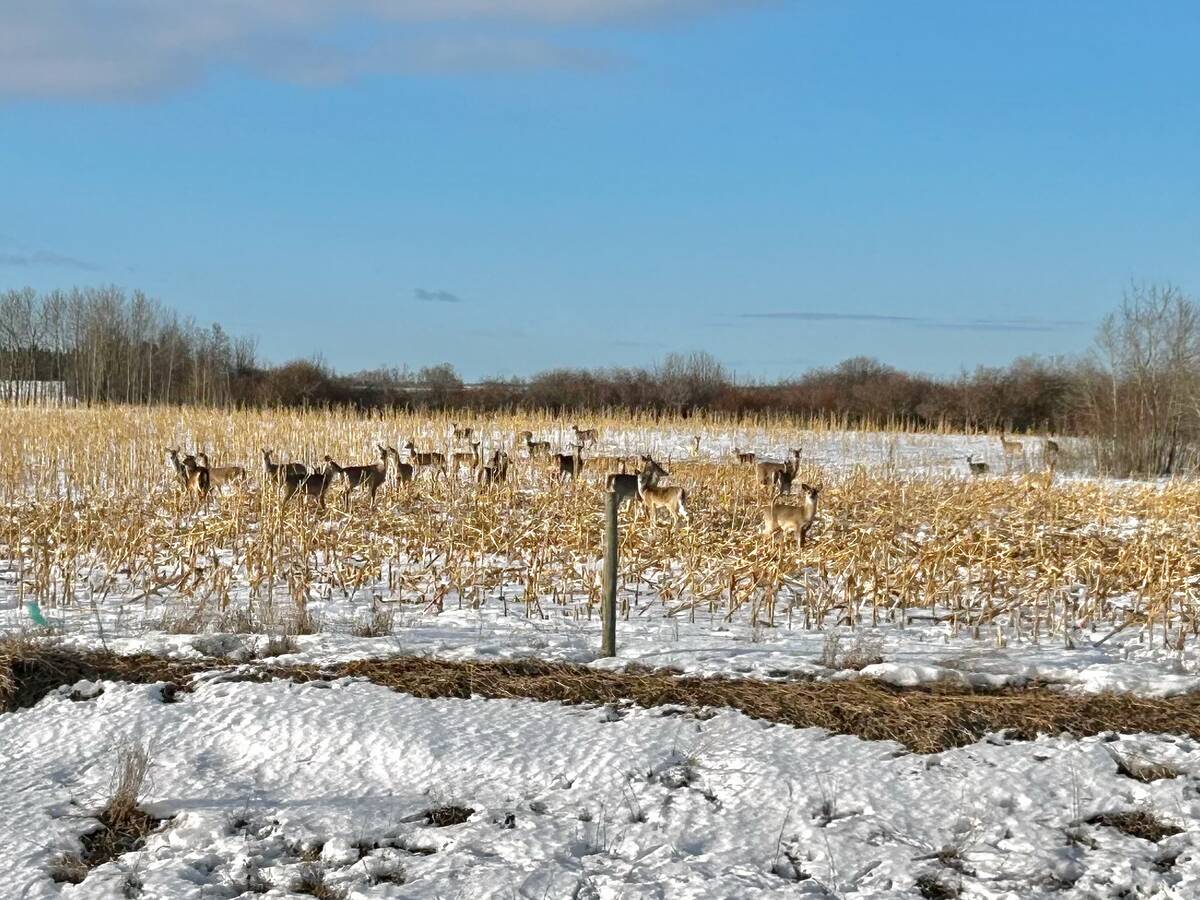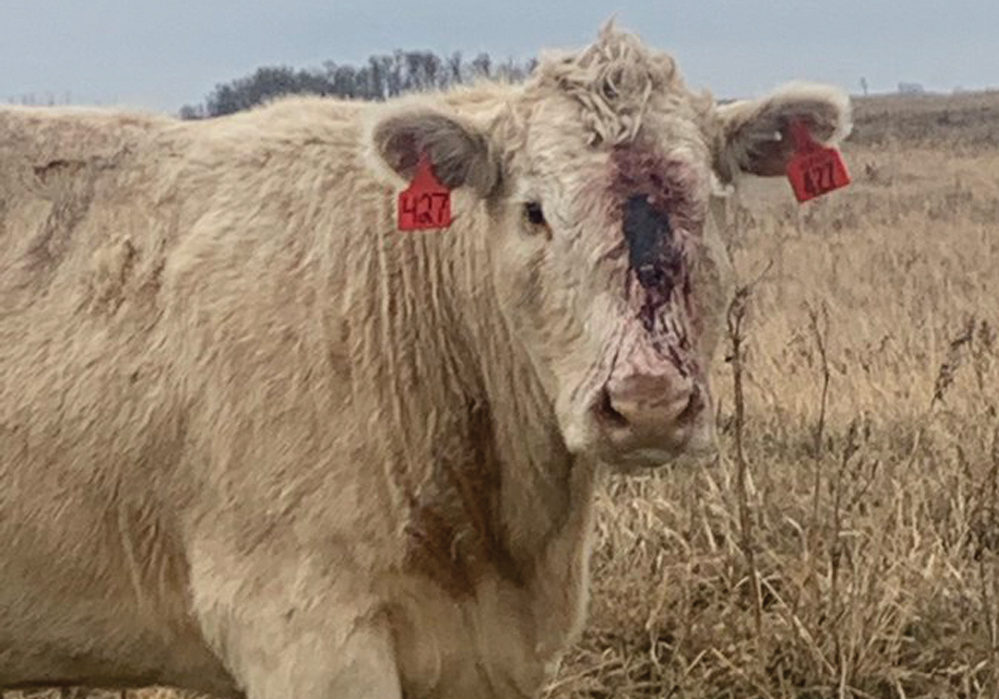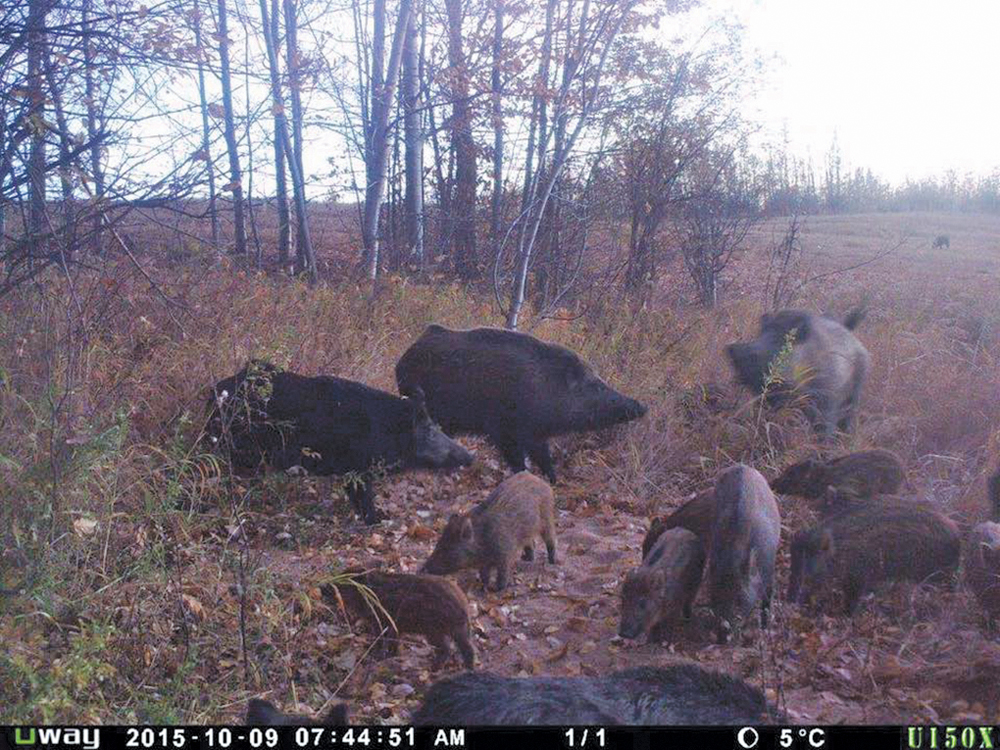ATV and truck tracks found in a soybean field that hunters entered to retrieve moose they’d shot is just the most recent incident of hunting on farmland without permission, say southwestern Manitoba municipal leaders.
A Reston-area farmer, whose neighbour first discovered gut piles in his unharvested soybeans, reported the matter, which is now under investigation, to Manitoba Sustainable Development earlier this month.
- Read more: Municipalities want action on night hunting
- Read more: Rural landowners complain shooting at night more frequent
Read Also

Five new CWD cases confirmed in Manitoba
Chronic wasting disease (CWD) has been found in five more Manitoba deer, including in two new municipalities without previous cases of the disease.
It’s not the first time they’ve heard complaints like this, said RM of Pipestone Reeve Archie McPherson.
“We’ve had other incidents of people hunting on farmland and going through crops to retrieve animals that they’ve shot,” he said.
The problem seems to be intensifying the last couple of years as hunters from outside the area come looking for moose.
“We’re getting people from a long ways away coming, from the Interlake, Swan River, Mafeking areas, and around Winnipeg and Selkirk. They say they’ve come here to hunt because the moose population is depleted in their areas.”
And they don’t seem to know who or how to ask permission from landowners, he added.
“They don’t know whose land it is. Or they don’t know where to obtain permission. Or they may have permission on a piece of property or several parcels, and if they don’t find the animals they’re looking for… these roads aren’t travelled much… and they see a moose or deer and they can shoot them and retrieve them fairly quickly without being detected. There’s a certain amount of that going on.”
It’s raising landowners’ ire, he said. And it’s causing farmers to not want any hunters on their land.
Brian Kotak, managing director of the Manitoba Wildlife Federation, said in cases like this a big part of the problem is not enough conservation officers to enforce the laws. That emboldens lawbreakers who aren’t worried about getting caught at any sort of illegal hunting activity.
“There’s less enforcement out there and more opportunity for people to either do night hunting or hunt on private land without permission,” he said.
“Without having adequate enforcement in place it really leaves the door open for people to do illegal activities.”
Hunters should certainly know the rules with regard to access to private land, he said. That’s all taught in the hunter education courses which they’re required to have before they can be licensed to hunt.
“So I guess it’s either people taking the course and they’re ignoring those laws and those teachings, or it’s people who are out hunting and don’t have a hunting licence and they’re hunting completely illegally.
“Going out hunting not having a licence and not having taken hunters’ education… I have no doubt that that is happening, he said.
MWF worries about what these acts are doing to hunters’ reputations as a whole, added Kotak.
“It’s damaging,” he said.
Provincial statistics for 2016 included 164 reports of hunting on private land without permission, 245 reports of night hunting or dangerous hunting, and an additional nine reports of hunting in a conservation closure area.
Municipal leaders in western Manitoba have raised various issues related to hunting in recent months, most notably the practice of spotlighting — the practice of shining lights into an animal’s eyes at night — and pressing the province to ban it.
Public safety scares and dead livestock drew significant attention to the matter last fall and winter.
The province said in late winter the government took the issue very seriously and was stepping up enforcement activities.
McPherson said word of the Manitoba Métis Federation voting this month to ban the practice of spotlighting in agro-Manitoba is definitely a move forward to resolving that issue.
“That’s certainly a very positive move, a very positive step,” said McPherson.
The MWF passed two resolutions at its annual general meeting in September that will ban spotlighting but will allow night hunting in remote and northern regions of the province to continue. The Métis Laws of the Harvest, which are self-governed, will be updated to reflect the passage of the resolutions.
















